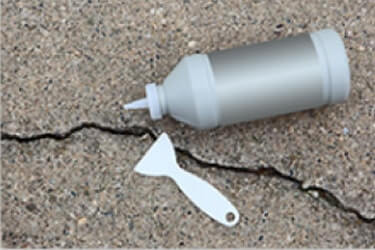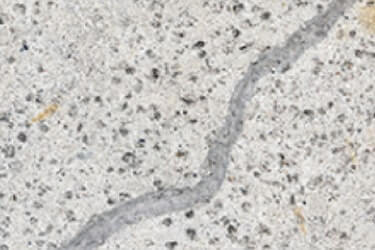Different Types of Concrete Repairs: Which One Do You Need?
Gone were the days of plain and grey concrete works. Mostly in today’s construction projects, decorative concrete designs are the trends for patios, slabs, sidewalks, driveways, entryways, countertops, pools decks, garages, and more. While serving as an integral part of a structure, decorative concretes contribute to aesthetic enhancements as well.
Being a composite substance, concrete is the main material for concrete works. However, as you might already know, concrete can still fall victim to damages due to weather and time. Therefore, concrete is susceptible to cracks, discolouration, scaling, and disintegration even if it is durable.
In that case, efficient repair works must come into play. But which concrete repair work do you need among many types to choose from? Before you can select the perfect repair method, it is essential to conduct a comprehensive assessment of the damages. This can be done correctly through various strength tests. The results of the assessment will be the basis for choosing the most suitable repair type.
For example, drying shrinkage can be the source of cracks. Under this circumstance, the cracks will likely stabilize after a while, in which repair is unnecessary. Continuous foundation settlement can cause cracks on concretes, too. For this instance, concrete repair is useless unless the settlement problem is remedied.
It is important to remember that there are many types of concrete repairs. It may look like a lot of options, but one repair method is only applicable to certain problems. Concrete repair methods are not a one-size-fits-all option.
Aside from evaluating the damages on the concrete, knowing the differences in the type of concrete repairs will help you distinguish which one you need the most. So, we made a list below that consists of the descriptions of the different types of concrete repairs. Let us have a look!

Epoxy Injection
When cracks in concretes are as narrow as 0.002 inches or 0.05 mm, the epoxy injection method is used to repair the damage. It starts by poking small openings in the concrete to create the passage of epoxy. Sealing exposed cracks on the surface must be next. After that, epoxy is injected under pressure.
Many structures like buildings, bridges, dams, and other types of concrete structures use epoxy injection because it has proven successful in restoring concrete damage. However, even if cracks have been restored, they will still recur near the source of the damage or the original crack. Things could get a bit more complicated from here. But do not worry because there are more options left if you cannot resolve the cause of the crack.
Meanwhile, epoxy injection is not applicable in high moisture content environments because it is not tolerant to wet surfaces. That is why actively leaking cracks have to be dried out before the application of epoxy. With this, moisture tolerant material must be applied first. For sure, the epoxy injection method requires more work than it seems. It requires a high degree of skills to effectively execute the job.

Routing and Sealing of Cracks
The second type of concrete repair is routing and sealing of cracks. This method is ideal when cracks reoccur because the original crack remains unresolved. Also, this type of concrete repair is suitable in situations when it only requires remedial repair. It is unlikely to use this method when the damage needs structural repair.
The techniques used in executing the routing and sealing method are less complicated compared to ones used for epoxy injection. To start, the procedure requires enlarging the damage on the exposed surface. Next, fill and seal it with a suitable joint sealant.
The process of routing and sealing method is more suitable for flat horizontal surfaces like floors and pavements. However, some contractors sometimes use this type of concrete repair for patterned and isolated cracks on vertical and horizontal surfaces. This is typically applied to waterproofing because the treatment is good at reducing moisture by sealing the entry of water or hydrostatic pressure.
Concrete Crack Repair by Stitching
The third type of concrete repair in our list is concrete crack repair by stitching. Well, this method does not look like it sounds.
The stitching crack method involves drilling holes on both sides of the crack. These holes are fastened with u-shaped fasteners. The process begins with establishing entries of the fasteners, then cleaning the holes, and anchoring the fasteners in the holes. The last step of the process is filling the holes with either a non-shrink grout or resin-based bonding system to secure them.
Additional Reinforcement for Crack Repair
Reinforcement of the crack repair method is fourth on our list. This type of concrete repair method is mostly applicable to reinforced concrete (concretes with steel bars in them) than decorative concrete. The two materials act as one to resist force. This concrete repair method is more complex than the previous three. That is why this has to be done by professionals to ensure the best results.
Grouting Method of Crack Repair
Last but not the least is the grouting method of crack repair method. This involves utilising different materials, usually grout, and other techniques in which cracks are filled with sealant. These materials help fix the damage and supposedly strengthen the damaged concrete.
But what is grout? Grout is the material used to fill the gaps or voids caused by cracks. It should remain stable to prevent recurring damages to the concrete. There are different types of grouts. Each one of them is used for a particular type of concrete masonry. Because of that, selecting the type of grout to use relies on its compatibility with the damaged material.
Wrapping Up
Concrete damage may be a common problem in our homes or offices. But most of us know little, or nothing at all, about concrete works, especially on how to properly restore them. Indeed, knowing the source of the problem is a great stepping stone in addressing it. If you know where the problem of decorative concrete lies, then you know which type of concrete repair to use.
Interested to learn more about these types of concrete repairs? Get in touch with the professionals at Decorative Concrete SEQ!
